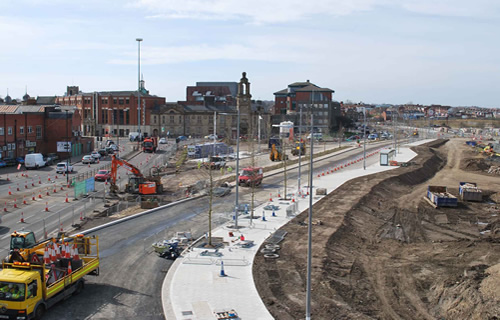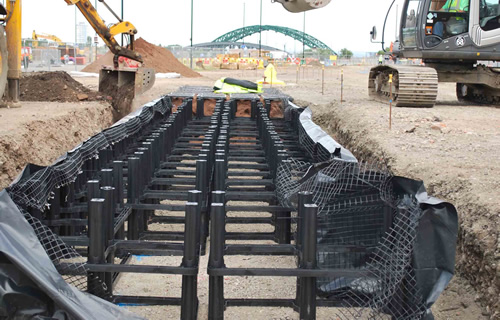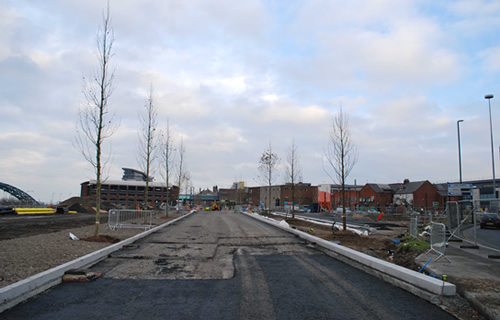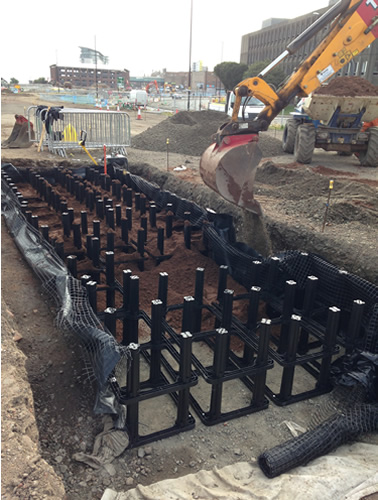Where
Location:
St. Mary’s Way and Livingstone Road (merged to become St. Mary’s Boulevard)Sunderland, Tyne and Wear
SR1, UK

Figure 1: The realignment of St Mary's Way
Description:
This project involved the realignment and merging of St. Mary’s Way and Livingstone Road to form a new, tree-lined boulevard that provides better accessibility between the city centre and the future business quarter.The SuDs component is the addition of 31 large specimen trees along the boulevard that are planted in soil cells that provide them with ample soil volume (16.18m3 for each tree) to allow them to thrive in close proximity to the road.

Figure 2: The Soil Cells
The realignment of Sunderland’s central ring road (St. Mary’s Way and Livingstone Road) is a core component of Sunderland’s urban design strategy, which aims to improve pedestrian accessibility and attract new investors to the new business quarter (on the former Vaux brewery site). James Gordon, senior landscape architect with the Sunderland City Council, describes it further: “the creation of this new ‘green’ boulevard is seen as a crucial element in meeting the aspirations of potential investors and encouraging development whilst becoming a welcoming and accessible city centre approach, enhancing links to the port of Sunderland and the future new business quarter.”

Figure 3: The new road
The tree-planting scheme is a major feature of the project, and in order to achieve it, soil cells were used to bring a high soil volume (16.18m3) to the 31 large specimen trees in order to ensure their prosperity for future generations.
Gordon elaborates: “In maximising the soil volume per tree whist providing suitable load bearing capacity, we are confident that we are giving the trees the best possible chance to thrive in this urban environment. [The soil cells] allowed us to overcome complex constraints such as existing utilities, new surface water drainage systems and dealing with trees on such a large scale.”
The large tree canopy will aid in water management on the site as well through interception and evapotranspiration, increasing in functionality over time as the canopy increases.
SuDS used:
Soil cells
More information:
Download full case study from DeepRoot here: http://www.deeproot.com/silvapdfs/caseStudies/StMarysWayCaseStudy.pdfDownload / view slideshare presentation on the project here: http://www.slideshare.net/deeprootgreen/transforming-the-character-of-st-marys-way
Back to case studies



